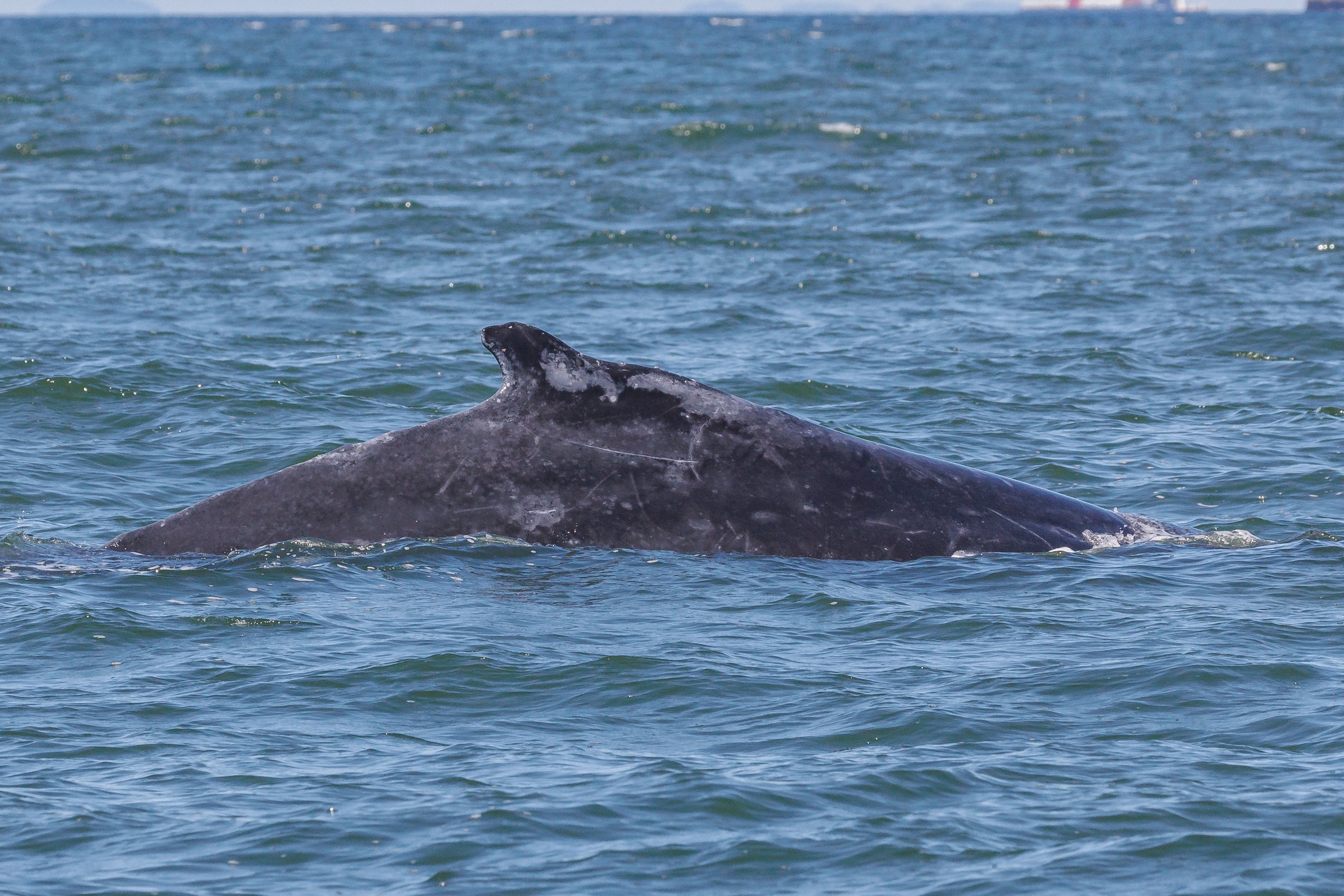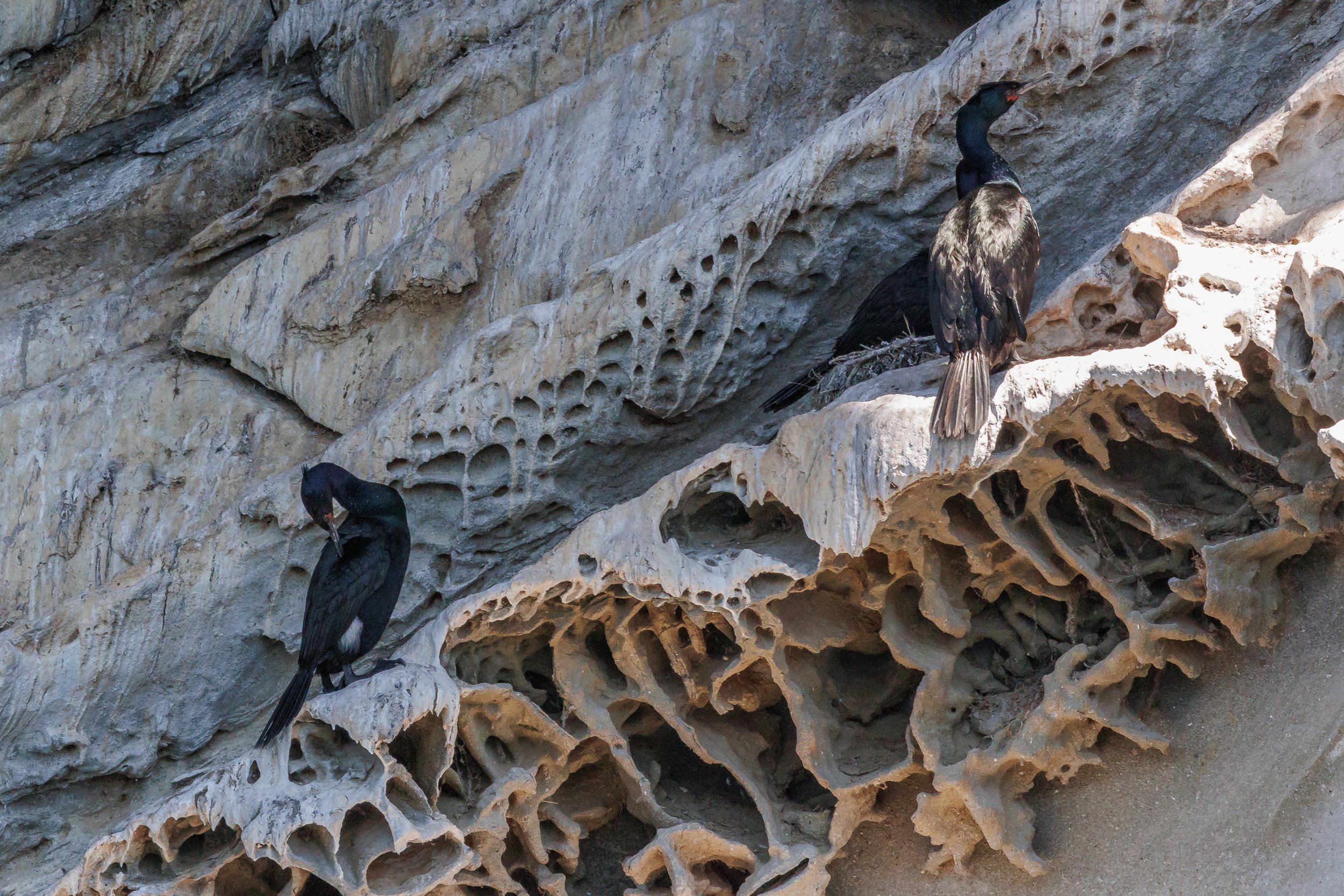June 30, 2023 - Spending time with Graze's 2019 calf in the Strait of Georgia
When observing humpback whales during our whale-watching tours off the coast of Nanaimo, BC, one distinctive feature never fails to capture our attention: the scarring and markings on their magnificent tails. These patterns offer a fascinating insight into the lives and journeys of these majestic creatures.
Humpback whales, scientifically known as Megaptera novaeangliae, possess a unique tail structure called the fluke. This tail is incredibly powerful and can propel these giants of the ocean through the water with grace and agility. The fluke of a humpback whale is recognizable by its width and deeply notched appearance, with two lobes extending from the central ridge.
Upon closer inspection, one can observe a variety of scarring and markings on a humpback whale's tail. These patterns are not only distinctive but also help researchers and enthusiasts identify individual whales and track their movements over time.
One common marking seen on humpback whale tails is "rake marks." These are parallel lines etched into the surface of the fluke, resulting from interactions with predators such as killer whales. These marks can range in depth and severity, providing valuable insight into the social dynamics and interactions with these other predatory species.
Another intriguing marking is the presence of barnacles and other marine organisms that can attach themselves to the tail. Humpback whales often accumulate a diverse array of these hitchhikers during their migrations and feeding grounds. The barnacles and other organisms leave behind distinct patterns, appearing as small dots and patches, adding character and personalization to each whale's tail.
Furthermore, researchers have discovered that humpback whales can acquire scars and markings from encounters with human-related activities. Collisions with vessels or entanglement in fishing gear can leave severe scars, reminding us of the ongoing need for conservation efforts and responsible whale-watching practices.
By cataloging and analyzing these scarring and marking patterns, researchers can gain a deeper understanding of a humpback whale's life history, and migration patterns. The whale we saw today was identified as Graze’s 2019 calf (BCY0523 calf 2019) with a distinct pattern on the underside of their tail fluke. They are also sporting a few scars from barnacles making their fluke very distinct and easy to ID.
Photos from today were taken by our onboard naturalist Vanessa Vereschahen and can be enjoyed below!
Graze’s 2019 calf (BCY0523). Photo by Vanessa Vereschahen
Graze’s 2019 calf (BCY0523). Photo by Vanessa Vereschahen
Graze’s 2019 calf (BCY0523) showing off their fluke. Photo by Vanessa Vereschahen
Graze’s 2019 calf (BCY0523). Can you see the distinct patterns? Photo by Vanessa Vereschahen
Graze’s 2019 calf (BCY0523). Photo by Vanessa Vereschahen
Graze’s 2019 calf (BCY0523). Photo by Vanessa Vereschahen
Graze’s 2019 calf (BCY0523). Photo by Vanessa Vereschahen
Graze’s 2019 calf (BCY0523), notice the dorsal is unique to each whale as well. Photo by Vanessa Vereschahen
Graze’s 2019 calf (BCY0523). Photo by Vanessa Vereschahen
Large male Stellar Sea Lion. Photo by Vanessa Vereschahen
Stellar Sea Lion scratching its neck. Photo by Vanessa Vereschahen
See those teeth? Photo by Vanessa Vereschahen
Is that a professional model? A very photogenic Harbour Seal! Photo by Vanessa Vereschahen
Harbour seal, check out those whiskers! Photo by Vanessa Vereschahen
River Otter slinking into the water. Photo by Vanessa Vereschahen
River Otter. Photo by Vanessa Vereschahen
Juvenile Bald Eagle. Photo by Vanessa Vereschahen
Juvenile Bald Eagle looking right at us! Photo by Vanessa Vereschahen
Freddie the Eaglet. Photo by Vanessa Vereschahen
A Turkey Vulture flying over. Photo by Vanessa Vereschahen
A Peregrine Falcon chick. Photo by Vanessa Vereschahen
Cormorants with their nest at the Bluffs! Photo by Vanessa Vereschahen






















